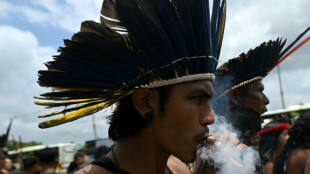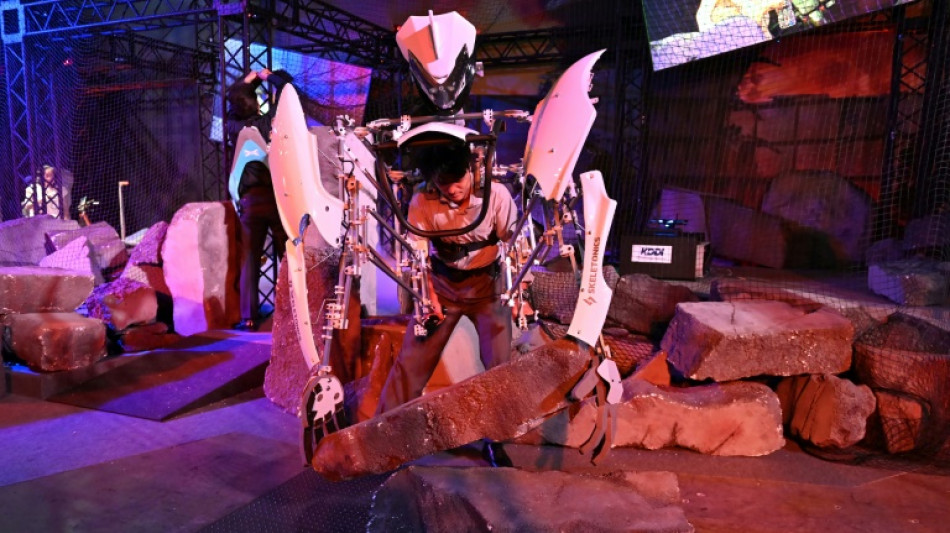
-
 Portugal, Norway book spots at 2026 World Cup
Portugal, Norway book spots at 2026 World Cup
-
Sinner hails 'amazing' ATP Finals triumph over Alcaraz

-
 UK govt defends plan to limit refugee status
UK govt defends plan to limit refugee status
-
Haaland's Norway thump Italy to qualify for first World Cup since 1998

-
 Sweden's Grant captures LPGA Annika title
Sweden's Grant captures LPGA Annika title
-
Tuchel lays down law to Bellingham after England star's frustration

-
 Sinner caps eventful year with ATP Finals triumph over great rival Alcaraz
Sinner caps eventful year with ATP Finals triumph over great rival Alcaraz
-
Portugal book spot at 2026 World Cup as England stay perfect

-
 Hakimi, Osimhen, Salah shortlisted for top African award
Hakimi, Osimhen, Salah shortlisted for top African award
-
Sinner beats great rival Alcaraz to retain ATP Finals title

-
 Schenk wins windy Bermuda Championship for first PGA title
Schenk wins windy Bermuda Championship for first PGA title
-
Crime, immigration dominate as Chile votes for president

-
 Kane double gives England record-setting finish on road to World Cup
Kane double gives England record-setting finish on road to World Cup
-
World champions South Africa add Mbonambi, Mchunu to squad

-
 Greenpeace says French uranium being sent to Russia
Greenpeace says French uranium being sent to Russia
-
'Now You See Me' sequel steals N. American box office win

-
 Argentina beat Scotland after frenzied fightback
Argentina beat Scotland after frenzied fightback
-
Argentina beat Scotland after stunning fightback

-
 Pope urges leaders not to leave poor behind
Pope urges leaders not to leave poor behind
-
Pressure will boost Germany in 'knockout' Slovakia clash, says Nagelsmann

-
 Ecuador votes on hosting foreign bases as Noboa eyes more powers
Ecuador votes on hosting foreign bases as Noboa eyes more powers
-
Portugal qualify for 2026 World Cup by thrashing Armenia

-
 Greece to supply winter gas to war battered Ukraine
Greece to supply winter gas to war battered Ukraine
-
India and Pakistan blind women show spirit of cricket with handshakes

-
 Ukraine signs deal with Greece for winter deliveries of US gas
Ukraine signs deal with Greece for winter deliveries of US gas
-
George glad England backed-up haka response with New Zealand win

-
 McIlroy loses playoff but clinches seventh Race to Dubai title
McIlroy loses playoff but clinches seventh Race to Dubai title
-
Ecuador votes on reforms as Noboa eyes anti-crime ramp-up

-
 Chileans vote in elections dominated by crime, immigration
Chileans vote in elections dominated by crime, immigration
-
Turkey seeks to host next COP as co-presidency plans falter

-
 Bezzecchi claims Valencia MotoGP victory in season-ender
Bezzecchi claims Valencia MotoGP victory in season-ender
-
Wasim leads as Pakistan dismiss Sri Lanka for 211 in third ODI

-
 Serbia avoiding 'confiscation' of Russian shares in oil firm NIS
Serbia avoiding 'confiscation' of Russian shares in oil firm NIS
-
Coach Gambhir questions 'technique and temperament' of Indian batters

-
 Braathen wins Levi slalom for first Brazilian World Cup victory
Braathen wins Levi slalom for first Brazilian World Cup victory
-
Rory McIlroy wins seventh Race to Dubai title

-
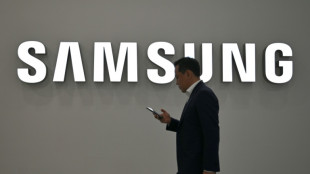 Samsung plans $310 bn investment to power AI expansion
Samsung plans $310 bn investment to power AI expansion
-
Harmer stars as South Africa stun India in low-scoring Test

-
 Mitchell ton steers New Zealand to seven-run win in first Windies ODI
Mitchell ton steers New Zealand to seven-run win in first Windies ODI
-
Harmer stars as South Africa bowl out India for 93 to win Test

-
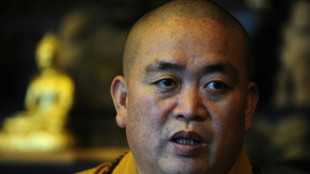 China authorities approve arrest of ex-abbot of Shaolin Temple
China authorities approve arrest of ex-abbot of Shaolin Temple
-
Clashes erupt in Mexico City anti-crime protests, injuring 120
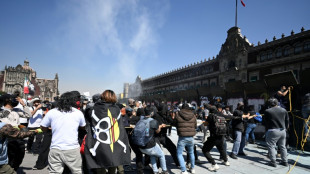
-
 India, without Gill, 10-2 at lunch chasing 124 to beat S.Africa
India, without Gill, 10-2 at lunch chasing 124 to beat S.Africa
-
Bavuma fifty makes India chase 124 in first Test

-
 Mitchell ton lifts New Zealand to 269-7 in first Windies ODI
Mitchell ton lifts New Zealand to 269-7 in first Windies ODI
-
Ex-abbot of China's Shaolin Temple arrested for embezzlement

-
 Doncic scores 41 to propel Lakers to NBA win over Bucks
Doncic scores 41 to propel Lakers to NBA win over Bucks
-
Colombia beats New Zealand 2-1 in friendly clash

-
 France's Aymoz wins Skate America men's gold as Tomono falters
France's Aymoz wins Skate America men's gold as Tomono falters
-
Gambling ads target Indonesian Meta users despite ban


Japan show provides glimpse of robots as future of rescue efforts
With a drone camera, a survivor is spotted in the rubble. A robot on tracks brings him water while rescuers in exoskeletons clear an escape route for an autonomous stretcher to take her to safety.
This is the futuristic vision on display at the Japan Mobility Show, aiming to exhibit how technology can help and sometimes replace humans in a country short of workers and no stranger to disasters.
But so as not to alarm people, the imaginary tragedy is unleashed by Godzilla, who has unleashed catastrophe in Japanese disaster films since the 1950s.
In Japan nearly 30 percent of the country's population is aged 65 and over.
"Because of the decline of the population there are fewer and fewer people available for dangerous tasks," said Tomoyuki Izu, founder of Attraclab, a local start-up specialising in autonomous mobility.
"My idea is to help people such as firefighters with my machines," Izu, 61, told AFP.
It was Attraclab that co-developed the small delivery robot squeezing through the cardboard rubble at the Japan Mobility Show and designed the remote-control stretcher on wheels or tracks.
For now the Japanese government favours "traditional equipment" for relief efforts, he said at the event, which opens to the public this weekend.
But Izu believes there will be a market for more advanced technology in the future.
"There's a lots of anime with humanoid robots in Japan, and therefore people love them. But these kinds of autonomous vehicles are still very strange for them," he said.
Since 2016, Japan's Kawasaki Heavy Industries (KHI) has been developing Kaleido, a robust humanoid robot capable of delicately lifting and moving injured people.
- 'Shortage of labour' -
"In the future this robot will be able to save people, or go to dangerous zones, like fires," said Itsuki Goda from the robotics division of KHI.
He conceded, though, that the machine needs more development on its scanning capabilities to get through difficult terrain.
"We need more years of development if we want to use it in real situations, where conditions are always different," he told AFP.
Kaleido's current load capacity of 60 kilograms (132 pounds) will be increased very soon with a new prototype, promised Goda.
Price is also an issue.
Right now this robot is "maybe 10 times more expensive than a human, but if we produce 10,000 of them per year, the price will go down rapidly", Goda added.
Since the Fukushima nuclear disaster in 2011, another niche segment has exploded: robots to clear up disaster areas that are difficult or dangerous to access.
Engineering firm Sugino Machine presented a powerful but small robotic arm rigged on crawlers that can work in areas that emergency workers cannot go.
The machine was built in 2018 for a nationally run atomic research agency, as Japan continues the work to decommission the Fukushima Daiichi nuclear plant.
"This can be used for initial damage assessment or to remove debris or to remove heavy items that people cannot lift," Akira Inujima from Sugino Machine told AFP.
Various tools can be attached to its arm, such as image, temperature or radioactivity sensors, or a high-pressure water lance.
"We have a shortage of labour. It is difficult to go all robot. But we can offer solutions to help people's work," he said.
"After Fukushima, we have been able to continue technological development because there has been project after project (heavily supported by the government), like removing debris, that needs our work," Inujima said.
"It's important to continue this work and not make this fade away."
J.Saleh--SF-PST



